Taking a Stand: Student Protests at Old Dominion University
The 1960s and 1970s were a time of student activism on campuses nationwide, and Old Dominion University would not be excluded from this trend. Despite the fact that Norfolk and Old Dominion University (ODU) were historically conservative, due to the nature of being in the South, this did not stop students who felt they needed to speak up from demonstrating on campus. While Old Dominion never experienced the level of student protest seen on campuses such as the University of California, Berkeley, that doesn’t mean it was devoid of protests —and counterprotests— either. Some protests during the 1960s and 1970s were not contained just to campus, such as the “Save ODU ’’ campaign or the Vietnam Moratorium, which demonstrated the strong connection between the Norfolk community and ODU.
When discussing student protests of the 1960s and 1970s, there are two key subjects that people immediately think of: the Civil Rights Movement and the Vietnam War. Despite the Massive Resistance movement that combated public school desegregation integration in Virginia after the Brown vs. Board of Education Supreme Court decision in 1954, Old Dominion’s campus would not see organized protests regarding racial issues until the mid-1970s. During the late 1960s, protests on Old Dominion’s campus were mostly concerning the Vietnam War. There were three major protests against the Vietnam War: the first was a protest by ODU’s chapter of the Students for a Democratic Society (SDS) against Dow Chemical Company interviewing on campus; the second was the Vietnam Moratorium, carried out by both students and teachers to protest the continued Vietnam War; and the third was a protest in response to the Kent State Massacre.
Old Dominion’s chapter of SDS could accurately be described as relatively tame in contrast to more radical SDS chapters at other universities, with the members leaning “towards fasting and protesting military recruitment on campus.”1 This predilection towards protesting military recruitment would be the motivation behind the one major SDS protest on campus for the chapter’s entire tenure. On February 28, 1967, Dow Chemical, the company behind the production of napalm, an incendiary gel used frequently in Vietnam, was scheduled to perform interviews on campus. This was not surprising due to ODU’s large veteran population and proximity to Naval Station Norfolk. SDS planned to protest Dow Chemical and the United States’ use of napalm in front of the Webb University Center (Webb Center) from 9 a.m. to 4 p.m. When the SDS chapter president, Kurt Gayle, initially asked Dean of Students William Whitehurst for permission to hold a peaceful protest, he was refused. However, the night before the protest, Whitehurst changed his mind and allowed the protest to proceed, as long as it remained orderly.2 The protestors, numbering only 20, marched in front of Webb Center holding signs condemning Dow and the use of napalm. As the day continued, more students began to spectate the protest, numbering at least one hundred. Some spectators viewed the protest negatively and decided to throw eggs at the SDS members, while others began a counterprotest in support of the war effort in Vietnam.
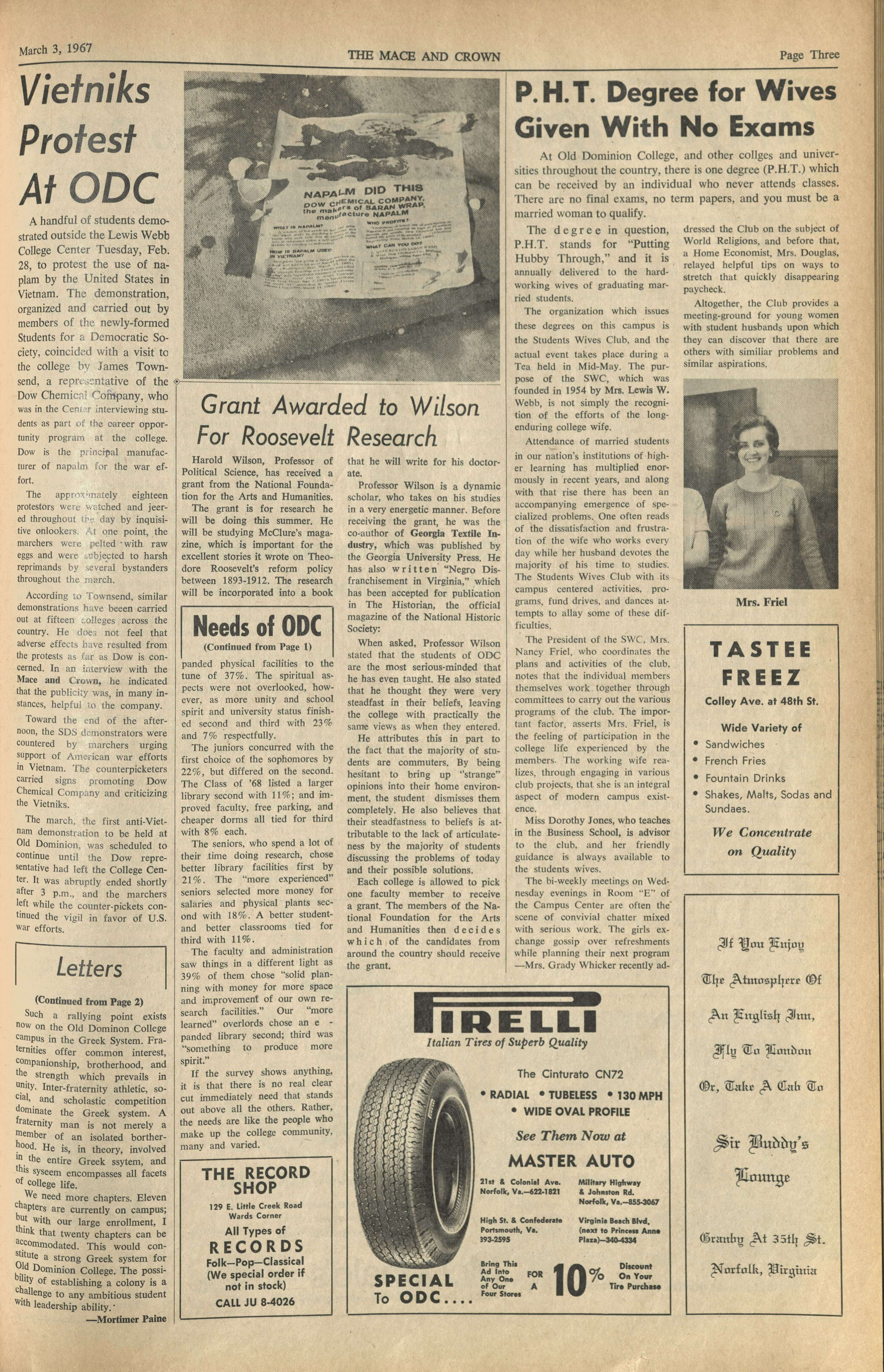
Figure 1. Mace & Crown Article about Dow Chemical Protest, March 3, 1967
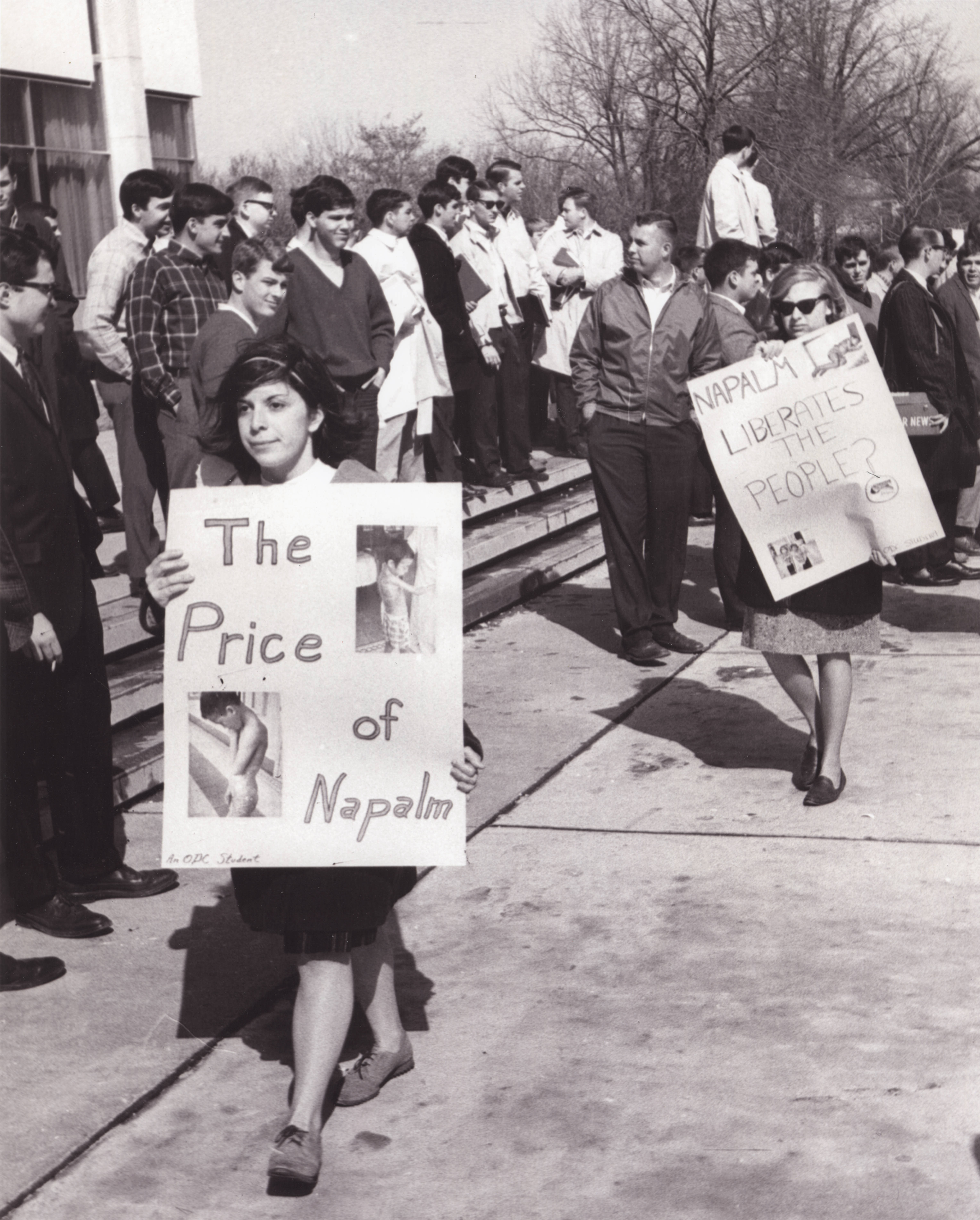
Figure 2. SDS Protest Outside Webb Center, February 28th, 1967
The second Vietnam War protest that occurred on campus was the Vietnam Moratorium. On October 15th, 1969, students and faculty of Old Dominion participated in the nationwide Day of Moratorium for Vietnam. The Vietnam moratorium was not an ODU-specific event, rather it was a nationwide event held on various college campuses in support of peace and the ending of the Vietnam War. However, in regard to ODU’s contribution, it was a day of contemplation and discussion about American involvement in Vietnam, as well as a day to voice opposition to that involvement in a peaceful manner. The Moratorium featured a variety of speeches related to the Vietnam War, all of which called for peace and an end to the war, or at least American involvement. As with similar anti-war protests, there were also pro-war demonstrations, but the Moratorium was a day of peaceful protest, with no recorded violence on ODU’s campus.
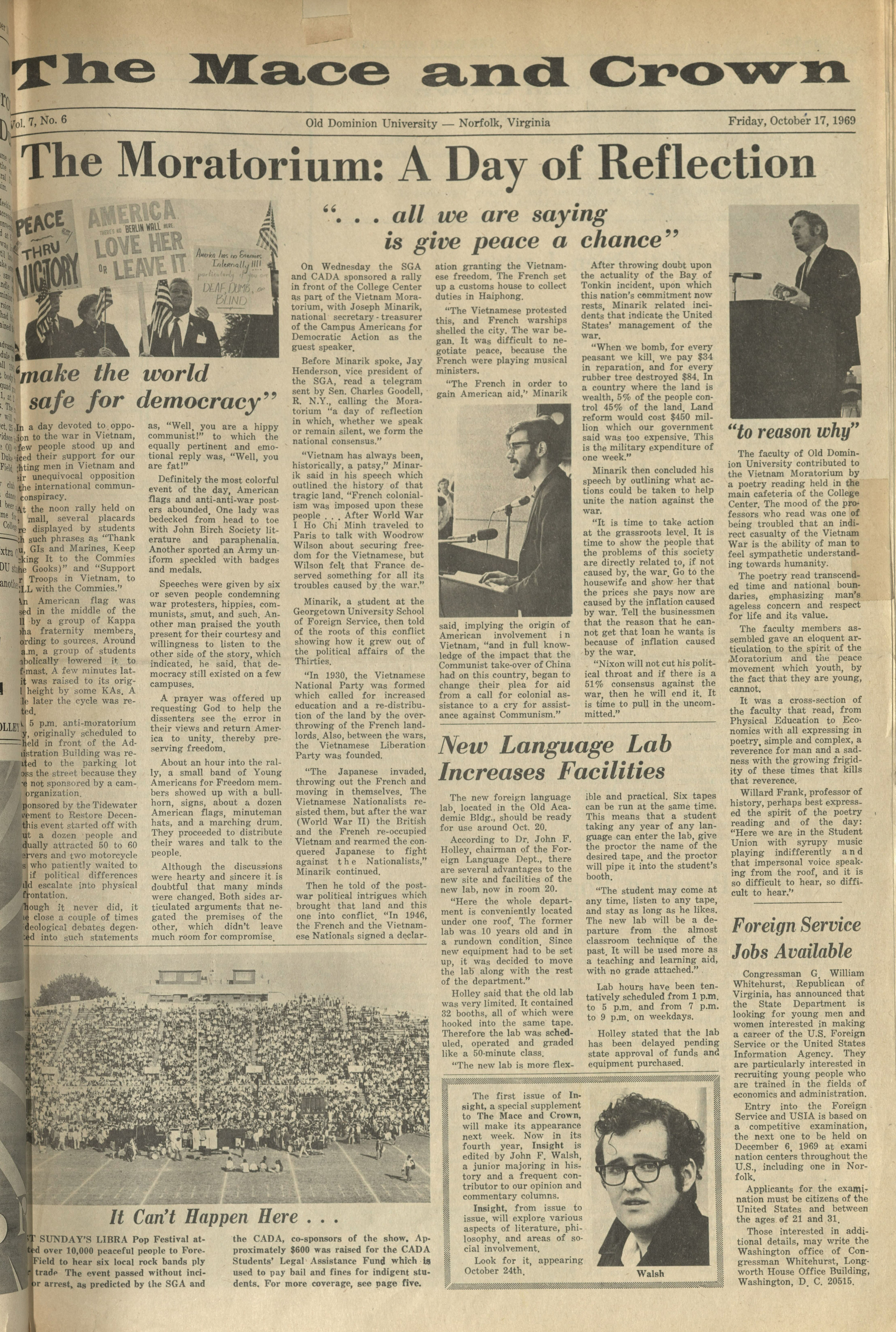
Figure 3. Front Page of Mace & Crown Discussing the Moratorium, October 17, 1969
The student strike on ODU’s campus in response to the Kent State incident was the last major student protest involving the Vietnam War. Demonstrating the more conservative leanings of ODU students of the era, the protests on campus were vastly different from those across the country. Whereas other college campuses saw buildings taken over by students and mass strikes, ODU’s students would not take as drastic measures in response to Kent State. Instead, in May 1970, the University saw a 24-hour peaceful vigil held by both students and staff on the mall in front of Webb Center. The Kent State massacre also inspired dialogue between the students, the administration, and faculty at ODU about the nature of the Vietnam War.
The most important protest in ODU’s history occurred in early 1970, as a result of Virginia Governor Mills E. Godwin cutting $8.4 million from ODU’s budget request. This put ODU, which acquired University status the previous year, in dire straits, leading to the “Save ODU”“ campaign, where students, faculty, staff, and Hampton Roads locals came together to persuade the government of Virginia to provide the necessary funding to keep ODU open. In an interview with James R. Sweeney, University Archivist, Professor Robert Stern referred to the “Save ODU” campaign as having “achieved a degree of unity that had been unknown on the campus before,” illustrating how the movement to save the University brought the campus together.3 The campaign was a pivotal moment in Old Dominion’s history; not only did it bring the faculty and students together, but it also provided the building blocks for the continued evolution of the University’s identity. The homecoming theme that year changed to reflect the students’ desire to save the University. Originally dubbed “A Time for Love,” the theme became “A Time for a Fair Appropriation.” A rally was held alongside homecoming to gain media attention; the homecoming parade down Hampton Boulevard featured a variety of floats decorated with “Save ODU” motifs. Students petitioned a variety of sources, including legislatures, in order to build support for Old Dominion. Ultimately, the “Save ODU” campaign would be successful, with the University receiving $1.6 million more than what Governor Godwin recommended. However, this was still $2.2 million short of what President Bugg said was needed for the college.4
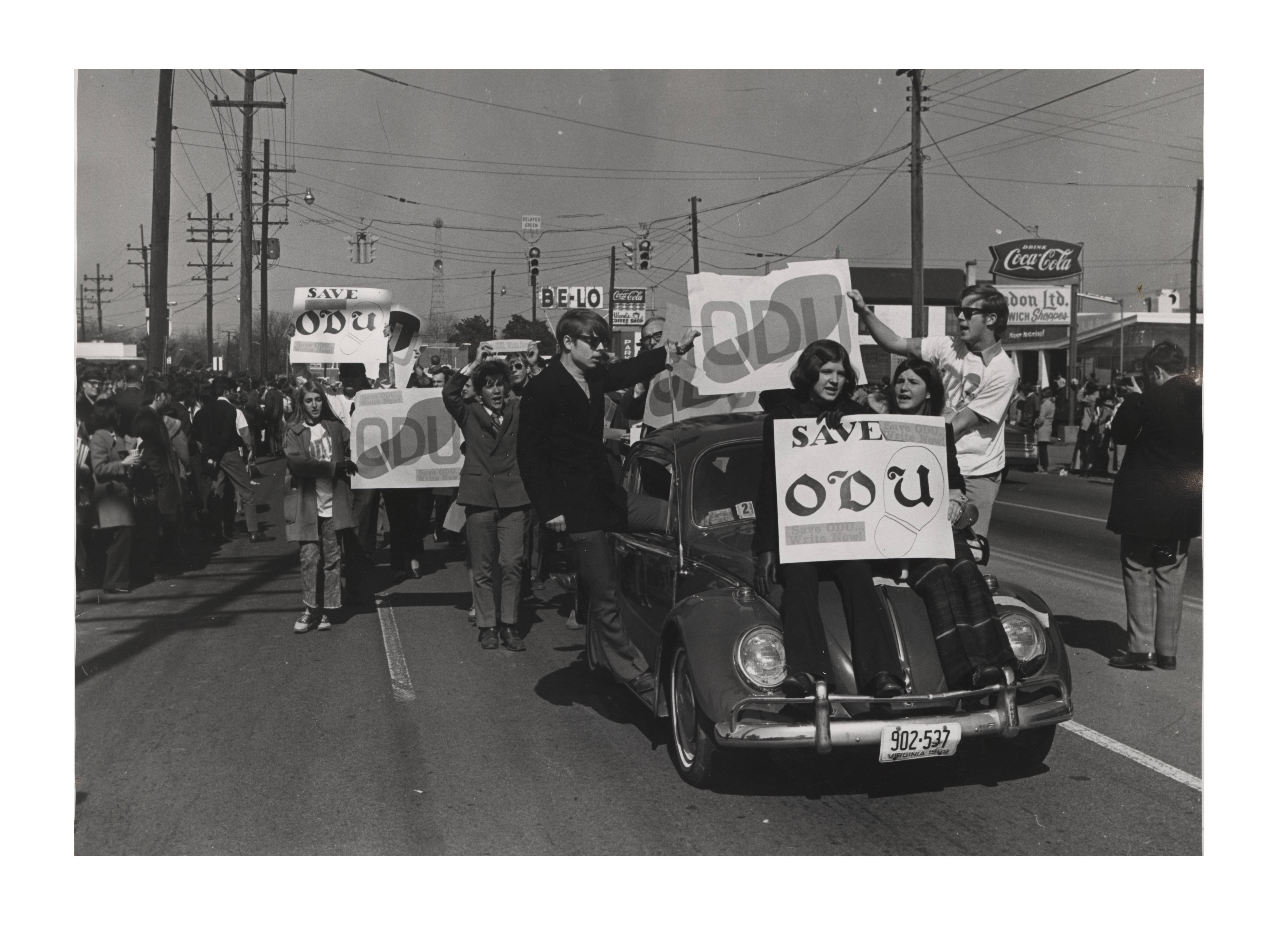
Figure 4. Save ODU Homecoming Parade on Hampton Boulevard, 1970
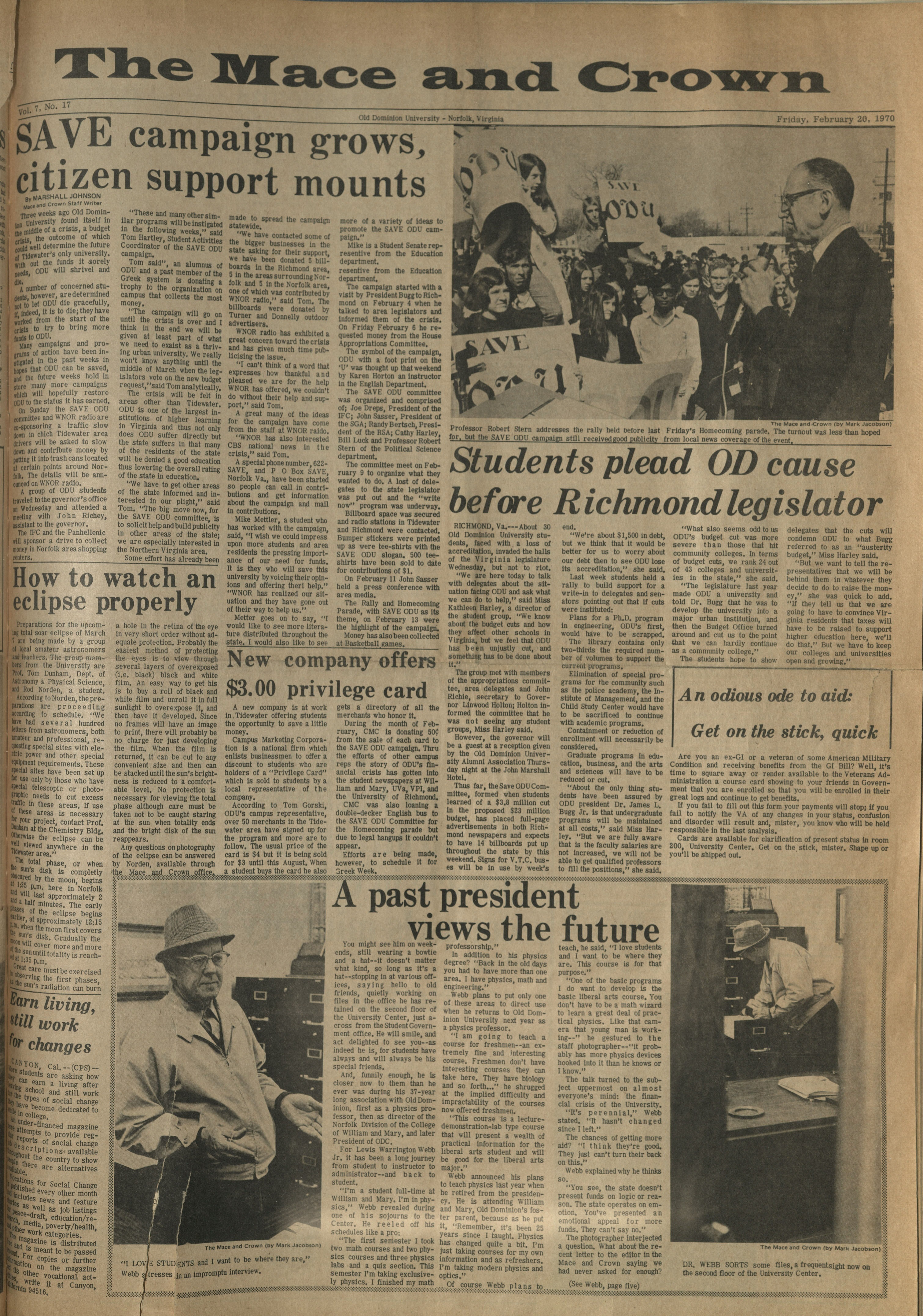
Figure 5. Mace & Crown Front Page Article on the “Save ODU” Campaign, February 26, 1970
While there would be a variety of small protests on campus, as well as a long-standing debate over freedom of speech and censorship, ODU would not see any other major protests until the late 1970s. In 1979, the Committee against Racism (CAR), an organization that sought to combat racism both on campus and at large, would participate in a counter-protest in front of a Ku Klux Klan rally. CAR was viewed as a radical group by some on Old Dominion’s campus and was at one point criticized by a letter sent into the Mace & Crown, ODU’s student newspaper, which claimed that the group’s vehement protests to the Klan (pictured below) were on par with the Klan’s racist rhetoric. CAR exemplified the new wave of protests against racism in the United States, as well as the rising protests against the Klan’s resurgence throughout the country. While CAR’s major protest against the Klan were not held on campus, but instead in nearby Virginia Beach, the protest demonstrated Old Dominion’s connections with the surrounding community.
Anna Woloshin graduated with a Bachelor of Arts in History from Old Dominion University (ODU) in May 2022. She will continue her education in the Master of Library and Information Studies program at ODU in Fall 2022.
Suggested citation
Please use the following as a suggested citation:
Anna Woloshin, "Taking a Stand: Student Protests at Old Dominion University," Mapping the University, Roy Rosenzweig Center for History and New Media, George Mason University (2022): <https://mappingtheuniversity.rrchnm.org/narratives/odu-protest/>.
Maggie Brydges et al., Old Dominion University from the Great Depression to the New Millenium, 1930-2000. (Norfolk, Va.: Office of Institutional Advancement, Old Dominion University, 2000). ↩︎
Maggie Brydges et al., Old Dominion University from the Great Depression to the New Millenium, 1930-2000. (Norfolk, Va.: Office of Institutional Advancement, Old Dominion University, 2000). ↩︎
Oral History Interview with Robert L. Stern, Part 2, Interviewed by Dr. James R. Sweeney, November 12, 1974. ↩︎
James R. Sweeney, Old Dominion University: A Half Century of Service, (Norfolk, Va: Old Dominion University, 1980). ↩︎